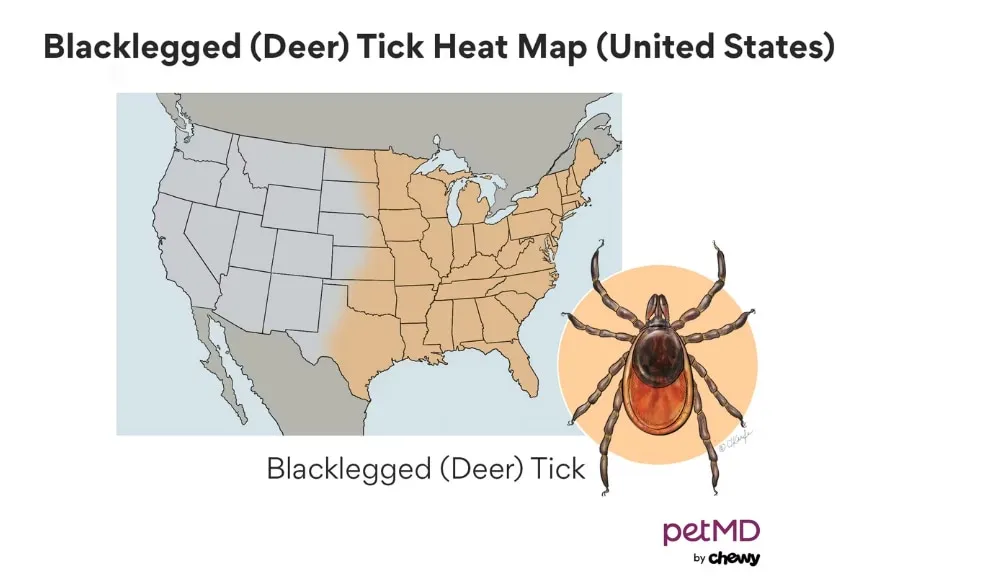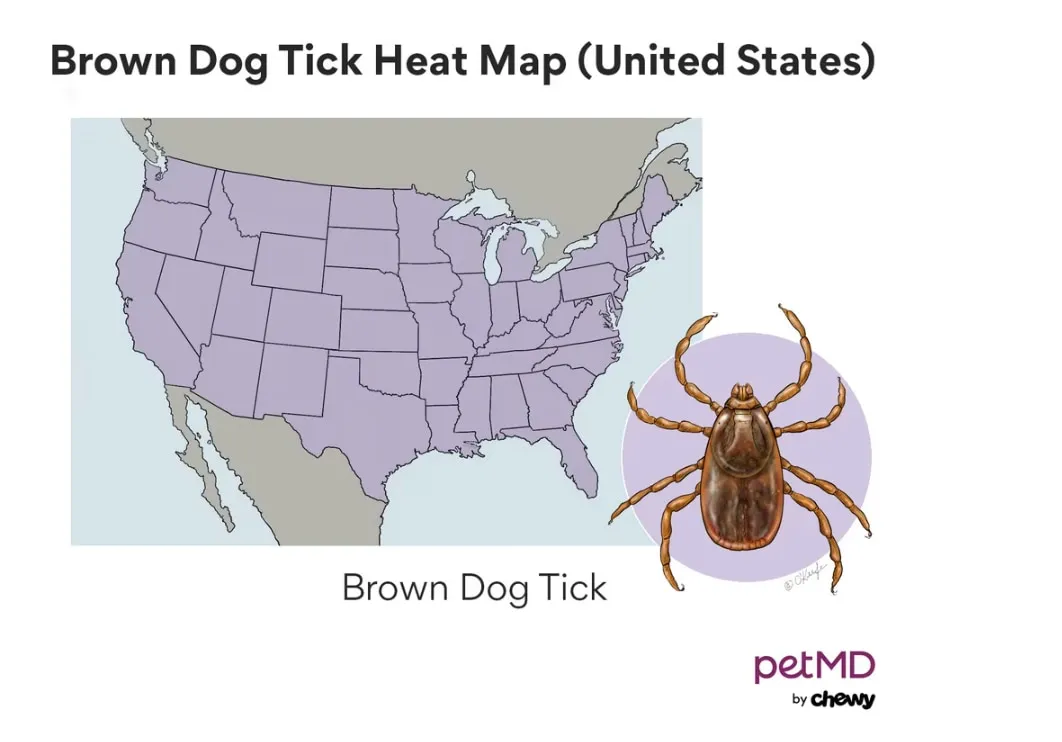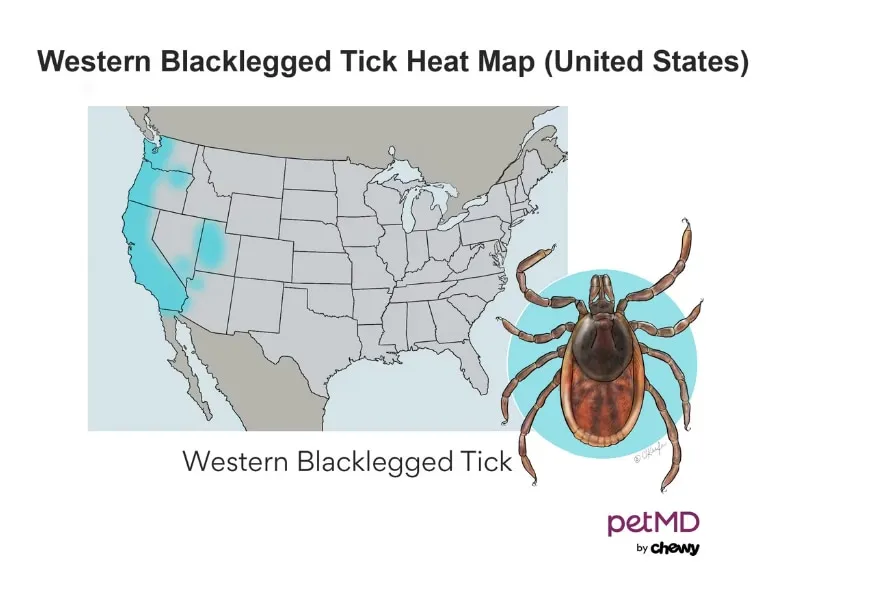Ensuring your dog’s health and happiness hinges significantly on proactive preventative care. Among the most crucial steps you can take is providing consistent, year-round protection against fleas and ticks. These tiny parasites pose considerable threats, not just to your canine companion’s well-being but potentially to your entire household. While various preventative methods exist, Chewable Flea And Tick Protection For Dogs has emerged as a preferred choice for many pet parents due to its convenience and effectiveness.
This comprehensive guide will delve into the critical aspects of flea and tick prevention, with a special focus on understanding and selecting the best chewable options available. We’ll explore why prevention is paramount, when to administer these treatments, the key factors influencing your choice, and a breakdown of popular chewable products to help you make an informed decision for your beloved pet’s long-term health.
Why Flea and Tick Prevention is Crucial for Your Dog (and Your Family)
Fleas and ticks are more than just an itchy nuisance; they are ectoparasites, meaning they live on the exterior of their host and feed on blood. Their bites can lead to a cascade of health problems for your dog, ranging from minor irritation to severe, life-threatening conditions. Understanding these risks underscores the importance of consistent and long term flea and tick treatment for dogs.
Direct Health Impacts
The immediate effects of flea and tick bites can be distressing for your dog. Flea saliva often triggers severe allergic reactions, leading to intense itching (pruritus), skin inflammation (dermatitis), and secondary bacterial infections from excessive scratching. In severe infestations, especially in puppies or small dogs, significant blood loss can occur, resulting in anemia. Tick bites can cause localized pain, inflammation, and abscesses. Furthermore, some ticks can inject neurotoxins that lead to tick paralysis, a serious condition that can be fatal if not promptly treated.
Disease Transmission Risks
Beyond direct harm, these parasites are notorious carriers and transmitters of a variety of infectious diseases. Fleas can transmit tapeworms if ingested by your dog, and are primary vectors for diseases like Bartonellosis (cat scratch disease), which can affect both dogs and humans. Ticks are even more dangerous, capable of spreading numerous debilitating conditions to dogs, including:
- Lyme Disease: Caused by Borrelia burgdorferi, leading to lameness, joint pain, fever, and kidney issues.
- Anaplasmosis: Caused by Anaplasma phagocytophilum or Anaplasma platys, affecting blood cells and causing fever, lethargy, and joint pain.
- Ehrlichiosis: Caused by Ehrlichia canis, affecting white blood cells and leading to fever, bleeding disorders, and chronic illness.
- Rocky Mountain Spotted Fever: Caused by Rickettsia rickettsii, a severe bacterial disease with symptoms like fever, joint pain, neurological issues, and skin lesions.
- Babesiosis: Caused by Babesia parasites, attacking red blood cells and leading to anemia, weakness, and jaundice.
The Zoonotic Threat
Perhaps one of the most compelling reasons for rigorous flea and tick control is the risk of zoonotic disease transmission—diseases that can spread from animals to humans. Fleas can carry diseases like murine typhus and plague, while ticks can transmit Lyme disease, Rocky Mountain Spotted Fever, and Anaplasmosis to humans. Keeping your dog free of these parasites is therefore not only an act of kindness to your pet but also a crucial public health measure for your entire family.
When is Year-Round Protection Essential?
Fleas and ticks are incredibly resilient and can adapt to a wide range of climates and environments. While many people associate these parasites with warmer months, they can survive, reproduce, and thrive even in colder temperatures, often seeking refuge indoors during winter. Given their hardiness and the serious diseases they carry, veterinarians universally recommend initiating chewable flea and tick protection for dogs as early as 8 weeks of age, and continuing this prevention year-round throughout your dog’s entire life. This consistent approach ensures there are no gaps in protection, preventing infestations before they can take hold and safeguard your dog from potential illness regardless of the season.
Understanding Your Options: The Rise of Chewable Flea and Tick Protection
When it comes to choosing a preventative for your dog, the market offers a wide array of options, including pesticides, repellents, and growth inhibitors, each targeting parasites at different life stages. Many products are designed as combination preventatives, offering protection against multiple parasites, including heartworms, intestinal worms, and mites, in addition to fleas and ticks. Among these, chewable flea and tick protection for dogs has seen a significant surge in popularity.
Oral vs. Topical: Why Chewables are a Popular Choice
Flea and tick preventatives primarily come in two forms: oral tablets (chewables) and topical liquids (spot-on treatments). Each has distinct advantages and disadvantages.
Topical Treatments: These are liquids applied to a small area of your dog’s skin, typically between the shoulder blades or down the back. They work by spreading over the skin’s surface, entering the oil glands, or being absorbed into the bloodstream. While effective, they have certain drawbacks:
- Application Mess: Can leave a greasy residue and require caution to prevent children or other pets from touching or licking the application site before it dries.
- Water Sensitivity: Efficacy can be reduced in dogs who frequently swim or require regular baths, as water can wash away or dilute the product. If you’re considering a topical option, ensure it’s a spot on treatment for dog ticks that is waterproof and suitable for your dog’s lifestyle.
- Absorption Issues: Some dogs may have sensitive skin reactions or uneven distribution of the product.
Oral Treatments (Chewables): These are palatable tablets that your dog ingests, making them an easy and convenient option for many pet parents. Once swallowed, the active ingredients are absorbed into the bloodstream, where they kill fleas and ticks when they bite the dog.
- No Mess, No Residue: Eliminates the greasy application and waiting period associated with topicals.
- Waterproof & Wash-Proof: Efficacy is not affected by bathing, swimming, or rain.
- Taste Appeal: Many chewables are flavored, making them appealing to dogs and easier to administer like a treat.
- Comprehensive Protection: Many chewable options offer broad-spectrum protection against fleas, ticks, and often other internal parasites and heartworm. This comprehensive approach often makes them the most effective tick and flea treatment for dogs.
Benefits of Chewable Preventatives
The popularity of chewable flea and tick protection for dogs stems from several key benefits:
- Ease of Administration: For many dogs, a flavored chewable is simply a treat, simplifying the monthly or quarterly dosing routine.
- Consistency of Protection: As they are absorbed internally, their effectiveness is not compromised by external factors like water, rubbing, or contact with other animals or children immediately after application.
- Reduced Risk of Exposure: There’s no risk of accidental human contact or transfer to other pets through touching the treated area.
- Broader Spectrum: Many advanced chewable formulations offer protection against a wider range of parasites beyond just fleas and ticks, including various intestinal worms and heartworm.
Considerations for Oral Medications
While highly beneficial, it’s important to monitor your dog after administering a chewable to ensure they consume the entire tablet and do not regurgitate it before absorption. For dogs with extremely sensitive stomachs, consulting your veterinarian about the best timing (e.g., with food) is crucial.
Key Factors When Choosing Chewable Flea and Tick Protection
Selecting the right chewable flea and tick protection for dogs requires careful consideration of several factors unique to your dog and your environment. Always consult your veterinarian before making a final decision to ensure the product is a good fit for your dog’s specific needs.
Geographical Parasite Prevalence
Different regions harbor different local parasite populations. Understanding which types of fleas and ticks are prevalent in your geographical area is vital to choosing a preventative that offers adequate protection. Resources like the Companion Animal Parasite Council (CAPC) provide valuable, localized data on parasite prevalence, allowing you to tailor your choice for optimal defense. This ensures your dog is protected against the specific threats they are most likely to encounter.
 Map showing prevalence of heartworm in North America
Map showing prevalence of heartworm in North America
 Map showing prevalence of Lyme disease in North America
Map showing prevalence of Lyme disease in North America
 Map showing prevalence of Ehrlichiosis in North America
Map showing prevalence of Ehrlichiosis in North America
 Map showing prevalence of Anaplasmosis in North America
Map showing prevalence of Anaplasmosis in North America
Your Dog’s Outdoor Exposure
Consider the types of outdoor environments your dog frequents. Dogs that spend significant time in wooded areas, hiking trails, dog parks, or even overgrown backyards are at a higher risk of encountering fleas and ticks. These parasites thrive in tall grasses, bushes, and leaf litter. However, even indoor-only dogs are not immune; fleas can hitchhike on humans or other pets, or even enter through window screens. Therefore, regardless of how much time your dog spends outdoors, veterinarians consistently recommend year-round prevention.
Genetic Sensitivities: The MDR-1 Gene
Certain dog breeds, such as Collies, Australian Shepherds, and Shetland Sheepdogs, may carry a genetic mutation known as the MDR-1 (Multidrug Resistance 1) gene. This mutation can impair their ability to metabolize and excrete certain medications, making them more susceptible to adverse reactions. While many manufacturers of modern chewable flea and tick protection for dogs have tested their products for safety in MDR-1 affected dogs, it’s always prudent to discuss this with your veterinarian. Genetic testing for the MDR-1 gene is often recommended for at-risk breeds.
Lifestyle and Activity Level
While no specific breed is inherently more prone to flea and tick infestations, a dog’s lifestyle and activity level can influence their exposure risk. Working dogs, herding dogs, or hunting breeds that spend extensive time in fields, forests, or areas with high wildlife traffic have a greater chance of picking up parasites than a less active dog content with indoor living and short leash walks. Your dog’s personality and typical daily routine should play a role in the choice of preventative.
Age and Weight: Tailoring to Your Dog’s Life Stage
The age and weight of your dog are critical considerations. Most chewable flea and tick protection for dogs specify a minimum age (often 8 weeks) and weight requirement. Puppies and small dog breeds need products specifically formulated for their smaller size and developing systems. Always check the product label and consult your veterinarian to ensure the chosen preventative is safe and appropriately dosed for your dog’s current life stage and weight. Using an incorrect dosage can be ineffective or, worse, harmful.
Pre-existing Medical Conditions
Your dog’s medical history is paramount. Certain classes of oral preventatives, particularly isoxazolines, should be used with extreme caution in dogs with a history of seizures, epilepsy, or other neurological disorders, as these medications may lower the seizure threshold in susceptible individuals. A thorough discussion with your veterinarian is essential if your dog has:
- A history of adverse reactions or allergies to previous medications.
- An underlying illness or is underweight.
- Is pregnant, nursing, or planned for breeding.
Your veterinarian can assess potential risks and recommend the safest and best over the counter flea meds or prescription options tailored to your dog’s health profile.
Prescription vs. Over-the-Counter Chewable Options
The market for flea and tick preventatives includes both over-the-counter (OTC) and prescription-only options.
Over-the-Counter Flea and Tick Products
OTC chewable flea and tick protection for dogs can be purchased without a veterinarian’s prescription from pet stores or online retailers. While generally more accessible and often less expensive upfront, it’s vital to exercise caution. Not all OTC products are created equal, and some may have a narrower spectrum of protection or be less potent than prescription alternatives. If you opt for an OTC chewable, it is imperative to still consult your veterinarian to confirm its safety and efficacy for your specific dog.
Prescription Flea and Tick Products
Prescription chewables require authorization from your veterinarian. These products often contain newer, more potent active ingredients and typically offer broader spectrum protection. Veterinarians often recommend prescription options because they have undergone rigorous testing, are generally considered more effective, and are often part of a comprehensive parasite prevention plan tailored by a medical professional. While they may have a higher initial cost, the enhanced protection and peace of mind they offer often outweigh the difference.
Popular Chewable Flea and Tick Protection Products for Dogs
A wide range of effective chewable products are available, many offering broad-spectrum protection. Here’s a look at some of the popular choices, focusing on their key features:
Bravecto
Bravecto is a highly effective chewable flea and tick protection for dogs containing fluralaner, an active ingredient from the isoxazoline class. It is renowned for its long-lasting efficacy, killing fleas within two hours and ticks within 12 hours, with protection extending for up to 12 weeks (3 months). Bravecto is also effective against demodectic, sarcoptic mange, and ear mites. It is suitable for dogs and puppies 6 months of age and older, and weighing 4.4 pounds or more. As with all isoxazoline drugs, use with caution in dogs with a history of seizures, epilepsy, or neurological disorders.
Comfortis
Comfortis is a chewable tablet containing spinosad, primarily targeting fleas. It is a fast-acting agent, effectively killing fleas within 30 minutes of administration. Comfortis does not provide protection against ticks. This monthly chewable flea treatment for dogs is suitable for dogs and puppies 14 weeks of age or older and weighing over 5 pounds. It is a good option for dogs primarily needing flea control.
Credelio
Credelio is a monthly chewable tablet that provides comprehensive protection against fleas and ticks. Its active ingredient, lotilaner, is also an isoxazoline, which begins killing fleas within four hours of administration. Credelio is approved for dogs and puppies 8 weeks of age and older, and weighing at least 4.4 pounds. Like other isoxazolines, caution is advised for dogs with a history of seizures, epilepsy, or neurological conditions.
Credelio Quattro
Credelio Quattro stands out as a broad-spectrum chewable, offering protection against six types of parasites. It combines lotilaner (for fleas and ticks) with moxidectin (for heartworms, hookworms, and roundworms), praziquantel (for tapeworms), and pyrantel (for hookworms and roundworms). This monthly chewable flea and tick protection for dogs is an excellent all-in-one solution for comprehensive internal and external parasite control. It’s suitable for dogs and puppies 8 weeks of age and older, weighing at least 3.3 pounds.
Nexgard
Nexgard is a popular monthly chewable tablet containing afoxolaner, another active ingredient from the isoxazoline class. It is effective against fleas, deer ticks, American dog ticks, brown dog ticks, and Lone Star ticks. Nexgard starts killing fleas within four hours and ticks within 48 hours. It is approved for dogs and puppies 8 weeks of age and older, and weighing more than 4 pounds. Additionally, it is used extra-label for the treatment of sarcoptic and demodectic mange. As an isoxazoline, use with caution in dogs with a history of seizures or neurological disorders.
Simparica Trio
Simparica Trio is a triple-action monthly chewable tablet offering broad-spectrum protection. It contains sarolaner (an isoxazoline for fleas and ticks), moxidectin (for heartworms, roundworms, and hookworms), and pyrantel (for roundworms and hookworms). It begins killing fleas and ticks within 12 hours and is also used extra-label to treat demodectic mange, sarcoptic mange, and ear mites. This comprehensive chewable flea and tick protection for dogs is suitable for dogs and puppies 8 weeks of age and older, and weighing more than 2.8 pounds. Due to sarolaner, use with caution in dogs with a history of seizures or neurological disorders.
Trifexis
Trifexis is a monthly chewable tablet that provides protection against fleas, heartworms, hookworms, roundworms, and whipworms. Its active ingredients are spinosad (for fleas) and milbemycin oxime (for internal parasites and heartworm prevention). It is a fast-acting drug, beginning to kill fleas within 30 minutes of administration. However, Trifexis does not provide protection from ticks. It is approved for dogs and puppies 8 weeks of age or older and weighing over 5 pounds.
Conclusion
Choosing the right chewable flea and tick protection for dogs is a vital part of responsible pet ownership, safeguarding your dog from discomfort, illness, and the potential spread of diseases to your family. With a variety of effective, palatable chewable options available, consistent year-round prevention has never been easier. Remember that while this guide offers comprehensive insights, the most accurate and personalized advice will come from your veterinarian. They can assess your dog’s individual health profile, lifestyle, and local parasite risks to recommend the optimal preventative solution. Don’t compromise on your dog’s health—invest in proactive, reliable protection to ensure they live a long, healthy, and happy life, free from the threat of fleas and ticks.
References
- PetMD. “Flea and Tick Prevention and Treatment for Dogs.” PetMD.com. https://www.petmd.com/dog/general-health/flea-and-tick-prevention-and-treatment-dogs
- Companion Animal Parasite Council (CAPC). “Parasite Prevalence Maps.” CAPCVET.org. https://capcvet.org/
- American Veterinary Medical Association (AVMA). “Flea and Tick Prevention.” AVMA.org. https://www.avma.org/resources/pet-owners/petcare/flea-and-tick-prevention
